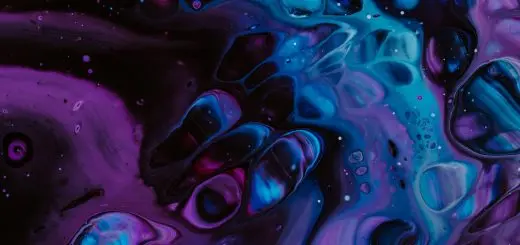Are Fairies Real or Just Legends?

Looking for more amazing products? Check out our online store and explore our collection here! Happy shopping!
Before diving in, please note: This post is for informational purposes only. If you’d like to know more about how we approach topics, feel free to check out our friendly Disclaimer Page.
Hey there, amazing readers! 
We’re committed to delivering quality posts, and your support (even just sticking around despite the ads) means everything to us. So, bear with us, and thanks for helping us keep the good vibes rolling. Now, on to the fun stuff!
TRANSLATE BUTTON AT THE END OF THE ARTICLE
A Quick Overview
When you hear the word "fairies," what comes to mind?
Perhaps images of delicate wings, shimmering lights, and a sprinkle of magic dance in your imagination.
Fairies have captivated our hearts and minds for centuries, inspiring stories, art, and even dreams.
But the real question is: Are fairies real, or are they just figments of our imaginations, woven into the fabric of folklore and fantasy?
In this article, we’ll embark on a whimsical journey through history, culture, and psychology to explore the enchanting world of fairies.
The Enchanting World of Fairies: An Overview
Fairies, those tiny beings often depicted with wings and an affinity for nature, have been a tantalizing part of human storytelling for ages.
Their charm lies in their dual nature—sometimes benevolent, sometimes mischievous.
They seem to exist in the spaces between reality and fantasy, often bringing a touch of magic to our mundane lives.
The concept of fairies varies widely across cultures and time periods.
Some portray them as ethereal beings, while others see them as earth-bound creatures with specific roles in nature.
Fairies often symbolize aspects of humanity’s relationship with nature, as well as the unknown.
Their presence, whether real or imagined, invites us to believe in something greater than ourselves.
Some cultures refer to these beings as "spirits" or "elementals," further blurring the lines between reality and myth.
The rich tapestry of fairy lore encompasses not just the whimsical but also darker themes, such as the consequences of crossing these elusive beings.
As I delve into fairy tales, I can’t help but feel a twinge of nostalgia for the stories my grandmother told.
They were filled with fantastical creatures living just beyond the edge of our world.
Whether you believe in fairies or not, their allure has the power to spark our imaginations and make us ponder the mysteries of life.
Historical Origins: Fairies in Ancient Cultures
The roots of fairy mythology stretch far back into ancient history.
The Celts, for example, had a rich tradition of fairy beliefs.
They referred to fairies as "the Good People" or “the Fair Folk,” believing they inhabited a parallel world.
The ancient Greeks spoke of nymphs, who were spirits of nature, embodying rivers, trees, and mountains.
In Norse mythology, we encounter the "elves," beings connected to fertility and nature, often considered a type of fairy.
Even in ancient Egypt, the concept of spirits existed in the form of "ka," which represented life force.
What’s fascinating is how these ancient cultures often viewed fairies as protectors of the natural world.
They were seen as guardians of the land, and people made offerings to appease them, hoping for good fortune.
The fear of angering these beings led to various rituals and practices, showcasing humanity’s respect for the unseen forces surrounding us.
Interestingly, fairy tales often served as cautionary tales.
They warned against disrespecting nature and the consequences of human folly.
As we study these origins, we see that fairies were more than just whimsical creatures; they were symbols of humanity’s relationship with the natural world.
Types of Fairies: From Pixies to Brownies and Beyond
Fairies come in all shapes and sizes, and it’s a delightful task to categorize them.
Here are some of the more popular types of fairies you might encounter in folklore:
Pixies: Often playful and mischievous, pixies are small and known for their love of pranks.
They thrive in gardens and are particularly fond of flowers.
Brownies: These are helpful household spirits that assist with chores at night in exchange for small offerings like milk or honey.
Sprites: Often associated with water, sprites are ethereal beings said to live in rivers and lakes.
Elves: Stemming from Germanic folklore, elves can be benevolent or malevolent, often linked to nature and magic.
Dryads: These tree nymphs are said to be indelibly tied to their trees, living and dying with them.
Each type of fairy has its distinct personality, motivations, and quirks.
Some are gentle and kind, while others can be mischievous or vengeful.
The diversity of fairy types reflects the complexity of human emotions and relationships, much like people themselves.
When I think of these unique fairy types, I can’t help but smile at the stories they inspire.
Each one adds a touch of magic to our understanding of the world.
Fairies in Folklore: Stories from Around the Globe
Fairies have woven their way into folklore across the globe.
In Irish mythology, the "Tuatha Dé Danann" are often thought of as ancient fairy folk.
In Italy, "Fate" are powerful beings who bestow gifts or curses.
Meanwhile, in Japan, "Yokai" are spirits that range from helpful to harmful.
These stories often serve as cultural reflections.
They reveal what people valued, feared, or aspired to.
For example, many fairy tales caution against greed or hubris, highlighting the importance of humility and respect for nature.
The beauty of these tales lies in their universal themes, despite their cultural differences.
The struggle between good and evil, the consequences of human actions, and the importance of community echo in fairy stories from every corner of the world.
When I share these stories, whether around a campfire or at a family gathering, I see the sparkle in people’s eyes.
It’s a reminder that storytelling is a powerful tool that connects us to our past and each other.
The Science Behind Belief: Why Do We Love Fairies?
So why do fairies hold such enduring appeal?
Psychologically, they provide an escape from reality.
In a world filled with pressures and challenges, the idea of magical beings can be comforting.
Fairies allow us to dream, to believe in the impossible, and to hope for something greater.
Our love for fairies can also be traced to childhood innocence.
As kids, we believe in magical creatures without question.
This sense of wonder is often nurtured by parents and caregivers, creating lasting memories and a sense of joy.
Cognitive scientists suggest that humans are naturally inclined to believe in the extraordinary.
Our brains are wired to find patterns and create narratives, often filling gaps with imagination.
Fairies, with their colorful tales, become part of our narrative fabric, offering us joy, wonder, and cautionary lessons.
As an adult, I find myself revisiting these beliefs.
The magic of storytelling never truly fades; it simply transforms.
Fairies remind us that life can be enchanting, if only we take a moment to look for it.
The Role of Fairies in Literature and Art
Fairies have inspired countless works of literature and art.
From Shakespeare’s enchanting characters in "A Midsummer Night’s Dream" to the modern tales of J.K.
Rowling, these mystical beings continue to captivate our imaginations.
Artists throughout history have depicted fairies in various forms.
They have appeared in paintings, sculptures, and even in film, showcasing their ethereal beauty and whimsical charm.
The themes of love, magic, and nature resonate through these artistic representations, reflecting humanity’s eternal fascination with the supernatural.
Fairies often serve as metaphors for deeper human emotions.
They represent our desires, fears, and the complexities of love.
This layered symbolism makes them rich subjects for artistic exploration.
I remember flipping through an illustrated fairy tale book as a child, enchanted by the vibrant colors and delicate details.
Even now, I appreciate how literature and art work together to transport us into a magical world filled with possibilities.
Fairy Sightings: Myths, Legends, and Modern Claims
Throughout history, there have been countless claims of fairy sightings.
From the fairy rings of Ireland to reports of "little people" in various cultures, these stories add layers to the fairy mythology.
Some people recount personal experiences of encountering fairies in nature.
These stories often describe the feeling of being watched or the sighting of flickering lights in the woods.
While skeptics dismiss these claims as mere imagination or misinterpretation of natural phenomena, they highlight our longing to connect with something beyond the ordinary.
In more recent times, the advent of social media has given rise to modern fairy sightings.
Users share photos and videos claiming to capture evidence of these magical beings.
Whether these sightings are genuine or cleverly crafted remains a topic of debate.
As I read these contemporary tales, I can’t help but feel a mix of amusement and wonder.
Are they real?
Or are they just stories meant to evoke a sense of magic?
Regardless, they keep the fairy lore alive.
Science and Skepticism: Can Fairies Be Proven Real?
The question of whether fairies are real is often met with skepticism.
In a world driven by science and rational thought, many dismiss the notion of fairies as mere superstition.
However, that doesn’t mean we should completely disregard these beliefs.
Science often struggles to explain the enduring nature of fairy myths.
While we can’t prove the existence of fairies, we can understand why people might believe in them.
Our brains are wired for storytelling, and myths help us make sense of the world.
Historical evidence suggests that fairy beliefs were prevalent in various cultures, serving specific purposes.
They provided explanations for natural phenomena, offered comfort, and even instilled moral lessons.
I find it fascinating that, while the scientific community may question fairy legends, the very act of believing in them reveals something profound about humanity.
We yearn for wonder, for connections to the unexplained.
The Psychological Appeal of Fairies in Our Lives
Fairies hold a special place in our hearts because they tap into our collective psyche.
They are symbols of innocence, magic, and the mysteries of nature.
In a fast-paced world, the idea of these whimsical beings allows us to slow down, dream, and reconnect with our inner child.
They can also serve as a reminder of the importance of balance in our lives.
Fairies are often depicted as guardians of the natural world, urging us to care for our environment.
This connection fosters a sense of responsibility and encourages us to protect what we cherish.
The psychological appeal of fairies extends beyond mere escapism.
They inspire creativity, encouraging us to explore our imaginations and express ourselves.
Many artists and writers draw inspiration from fairy lore, creating works that resonate deeply with audiences.
As I look back on my own experiences, I realize how fairies have shaped my understanding of creativity and beauty.
They remind me that life can be magical, if only we open our eyes to the possibilities.
Fairies and Nature: Guardians of the Environment?
Many fairy tales emphasize the connection between fairies and nature.
These beings are often portrayed as guardians of plants, animals, and the environment.
This association reflects humanity’s longstanding respect for nature and the desire to protect it.
In various cultures, people believe that harming nature can anger fairies, leading to misfortune.
This belief encourages environmentally-friendly practices, urging individuals to respect the earth.
As we grapple with environmental challenges today, the symbolism of fairies as nature’s protectors becomes even more relevant.
They remind us of the delicate balance of ecosystems and the importance of nurturing our planet.
I often find solace in nature, feeling a sense of connection to the fairy myths that speak to the land around me.
Whether it’s a quiet forest or a blooming garden, I can imagine the fairies flitting about, reminding me to appreciate the beauty of the world.
How Fairies Inspire Creativity and Imagination
Fairies have always been a source of inspiration for creativity.
They spark our imaginations, urging us to dream beyond the confines of reality.
Writers, artists, and musicians often draw from fairy lore to create enchanting stories and artworks.
The creative process becomes a dance with the unknown.
Fairies symbolize the unpredictable nature of inspiration—sometimes appearing when least expected, leading to new ideas and breakthroughs.
They encourage us to embrace the whimsical and the fantastical, reminding us that creativity thrives in a world of imagination.
In my own creative endeavors, I find that fairy tales often serve as a springboard.
Whether it’s penning a story or painting a canvas, the magic of fairies invites me to explore, experiment, and create something beautiful.
Conclusion
So, are fairies real or just legends?
The answer may remain elusive, dancing like a flickering light just beyond our grasp.
But perhaps that mystery is part of their charm.
Fairies invite us to explore our imaginations, reflect on our connection to nature, and celebrate the magic in our lives.
Whether they exist in reality or reside in the realm of myth, fairies will continue to inspire and enchant us for generations to come.
Let’s embrace that magic and allow ourselves to believe in the extraordinary, if only for a moment.

The Enlightenment Journey is a remarkable collection of writings authored by a distinguished group of experts in the fields of spirituality, new age, and esoteric knowledge.
This anthology features a diverse assembly of well-experienced authors who bring their profound insights and credible perspectives to the forefront.
Each contributor possesses a wealth of knowledge and wisdom, making them authorities in their respective domains.
Together, they offer readers a transformative journey into the realms of spiritual growth, self-discovery, and esoteric enlightenment.
The Enlightenment Journey is a testament to the collective expertise of these luminaries, providing readers with a rich tapestry of ideas and information to illuminate their spiritual path.
Our Diverse Expertise
While our primary focus is on spirituality and esotericism, we are equally passionate about exploring a wide range of other topics and niches 

To ensure we provide the most accurate and valuable insights, we collaborate with trusted experts in their respective domains 
Our blog originally focused on spirituality and metaphysics, but we’ve since expanded to cover a wide range of niches. Don’t worry—we continue to publish a lot of articles on spirituality! Frequently visit our blog to explore our diverse content and stay tuned for more insightful reads.
Hey there, amazing reader! 
Check out our store here and take a peek at some of our featured products below! Thanks for being awesome!











